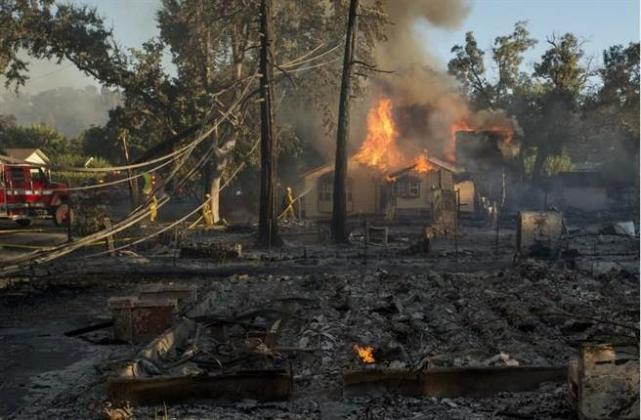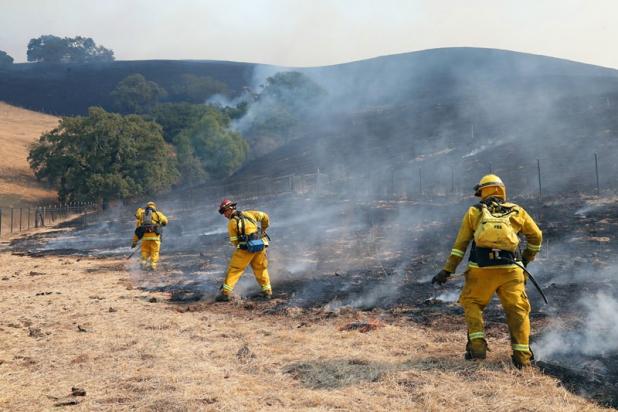
California's recurring wildfires, a harrowing manifestation of climate change, exemplify the seismic shift disrupting the insurance industry. As extreme weather events intensify, homeowners in fire-prone regions, and by extension, across numerous disaster-prone areas globally, face unprecedented challenges securing affordable coverage.
Climate change functions as a formidable accelerant, amplifying wildfire vulnerabilities through multifaceted mechanisms. Extended aridity, an inevitable ramification of escalating planetary temperatures, metamorphoses terrestrial ecosystems into desiccated, hyper-combustible landscapes. For instance, the Mediterranean climate of California, once characterized by mild, wet winters and warm, dry summers, now experiences extended dry spells, with precipitation patterns becoming increasingly erratic. Such environmental stressors precipitate the accumulation of senescent plant matter, furnishing copious combustible material for wildfire propagation. Rising temperatures also play a crucial role; they not only accelerate the evaporation of moisture from the soil and plants but also increase the likelihood of lightning strikes, a common ignition source. Additionally, gusty winds, which are becoming more frequent and intense due to climate change, can quickly spread wildfires over vast areas, turning small blazes into catastrophic infernos.
In response to the escalating wildfire threats, insurance companies are grappling with soaring losses. California alone has witnessed over $100 billion in wildfire-related insured damages in recent decades. This financial burden has forced insurers to take drastic measures. Premiums in high-risk Californian zones have skyrocketed, with some homeowners facing increases of up to 300%. Such exorbitant costs make insurance policies unaffordable for many, effectively pricing them out of the market. Moreover, major insurers are withdrawing from high-risk regions. State Farm, one of the largest U.S. carriers, halted new home insurance sales in California in 2023, a decision that sent shockwaves through the industry. This withdrawal leaves a significant coverage gap, leaving thousands of homeowners vulnerable to the financial devastation that wildfires can bring.

To address this widening coverage gap, alternative risk transfer tools are emerging as potential solutions. Parametric insurance, for example, operates on a unique principle. Instead of traditional indemnity-based claims, it pays out based on predefined triggers, such as wind speed, fire perimeter expansion, or the amount of rainfall. This automated framework facilitates expedited claims adjudication by obviating the requirement for protracted damage appraisals. When a predefined threshold is met, policyholders receive immediate compensation, allowing them to start the recovery process without delay.
Catastrophe bonds are another innovative approach. These financial instruments transfer risk from insurers to capital markets. Institutional and retail investors partake in the acquisition of these fixed-income instruments, thereby securing periodic coupon payments as a contractual entitlement.However, if a specified disaster occurs, such as a wildfire exceeding a certain intensity or affecting a defined area, investors may forfeit their principal. This mechanism spreads the risk across a broader range of entities, reducing the burden on traditional insurance companies.
California has also established the FAIR Plan, a state-backed insurer of last resort. While it provides a safety net for homeowners who cannot obtain coverage elsewhere, it comes with its own set of limitations. The FAIR Plan offers basic coverage at steep costs, and it often fails to fully meet the comprehensive insurance needs of policyholders.

Nevertheless, these alternative tools are merely stopgap measures. A comprehensive, long-term solution is essential. This approach should encompass aggressive climate mitigation strategies, such as reducing greenhouse gas emissions and transitioning to renewable energy sources. Strengthening building codes to ensure structures are more fire-resistant and implementing proactive wildfire prevention measures, like controlled burns and vegetation management, are also crucial steps. Until such holistic solutions are effectively implemented, the insurance crisis in wildfire-prone regions will persist, underscoring the urgent need to address the far-reaching economic consequences of climate change.





